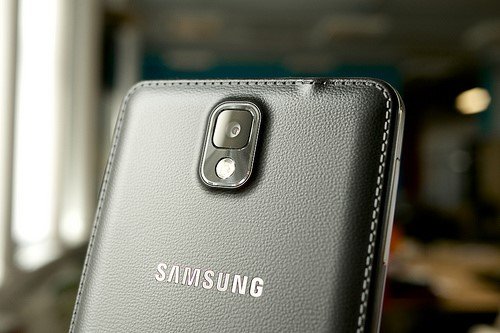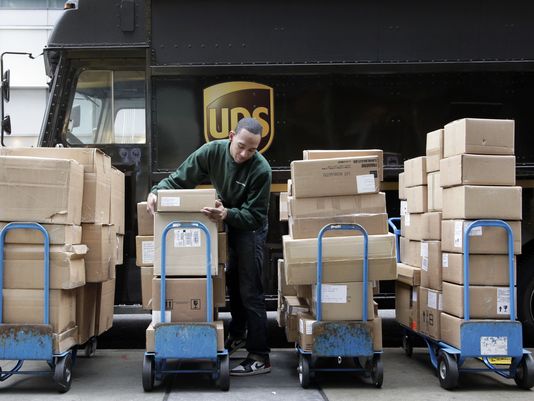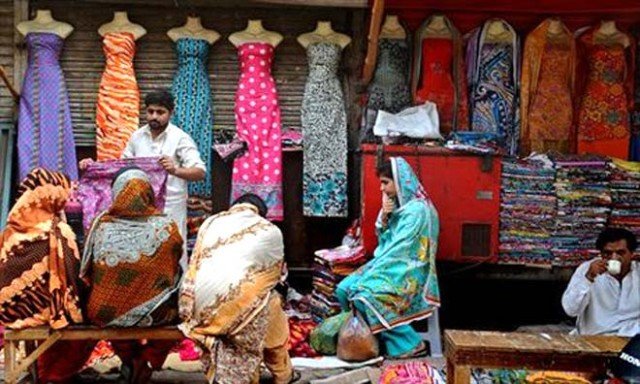Home Tags Posts tagged with "shopping"
shopping

Image source Pixabay
Whether you’ve been scrolling through some of the hottest trends this summer on Instagram or Pinterest, or you’ve been doing your fair share of window shopping, your bank account doesn’t have to stop you from getting the hottest looks this summer. Finding the most affordable on-trend pieces shouldn’t have to be difficult, which is why we’ve put together a list of some of the top ways to find the pieces that you want to have, without going bankrupt. While you may turn to same day loans when it comes to facing a financial emergency, when it comes to fashion, you’re going to need to have a separate budget. Here, we’re putting together some of the best ways to get the hottest summer looks on a budget.
Shop Around
When it comes to knowing the trends, you can be certain that Instagram and Pinterest will have you covered, as well as what your trendiest friends are wearing this summer. We can tell you all about the button-down dresses and the matching co-ord sets, but how do you go about getting the best price? The answer is simple – shop around! Whether you head around the shops in order to find similar pieces for a cheaper price, or you turn to the internet, there are so many different shops to choose from where you can find some of the most classic looks at a cheaper price. You’re always likely to find a budget version in a shop like Primark, or even in the supermarket, meaning your clothes allowance can stretch much further.
Hit The Sales
During the summer months, there is always a sale or two which you can really sink your teeth into. Hitting the sales can be a simple way to save money on some of the trendiest items, and while sales tend to get rid of old stock as opposed to new, that doesn’t mean that you can’t mix and match to really take hold of the look that you want. There are a number of sites, such as Money Saving Expert which can provide you with all of the information on the most up-to-date sales, where they are and how much you could save. At time of writing, Dorothy Perkins, H&M and Topshop all have sales of up to 70% off!
Know What You’re Looking For
When it comes to shopping, it is easy to get carried away and start bulk purchasing items, particularly when you’re in the middle of a sale-frenzy. However, make sure that you plan exactly what you’re looking for and put a budget in place of how much you are willing to pay. This will help to ensure that you are truly sticking to a budget and you don’t purchase plenty of items that you don’t need. Some of the trends for this summer include toe-ring inspired sandals, cherry prints, lavender colours and basket bags!
There are a number of ways that you can get the hottest summer trends on a budget when it comes to your wardrobe, meaning you don’t have to waste money on items that you don’t need. Utilise our tips above and set a budget in place to ensure that you are remaining strict with your money while still looking your best this summer.
If you still think mobile sites are a passing trend, you have fallen behind your consumers and your fellow businesses. With consumers and businessmen more and more obsessed with smartphones and the mobile sales conversions rising even higher, mobile optimization is a necessary move to successfully establish your online presence. Here are five ways that mobile optimization is a must for every business’ success:
1. Mobile is Important to Consumers

Image via Flickr by Janitors
According to a Pew Research survey, almost 60 percent of Americans owned a smartphone as of January 2014. And those same Americans use their phone for everything. It’s their camera, their calendar, and their entertainment when they are bored. They invest in everything from car chargers and cradles to smartphone speakers so they that their phone can forever act as the extension of their arm that it is. It is radio, GPS, and email, in addition to such menial tasks as phone calls and texts.
And this smartphone co-dependency transfers to the way they consume products and interact with businesses. Mobile sales rose over 50 percent in 2013, according to Google’s new Mobile Playbook, with almost a fifth of all sales now coming from smartphones and tablets. And if your business doesn’t have a functional mobile site, Google found that almost half of consumers won’t hesitate to turn to a competitor.
2. Mobile is Under-Appreciated
While those numbers should be enough to motivate every business into getting a clean mobile site, GetElastic’s infographic on mobile websites reported that just over a third of businesses had any sort of mobile site in 2013, meaning they are handing off a significant number of future customers every day to more tech-savvy companies.
And while having a mobile site is good, it isn’t the end of the road for mobile interaction. You need to have the right information clearly visible. That means address and hours for brick-and-mortar businesses and an easy-to-use shopping cart for e-commerce companies. Bottom line? Mobile isn’t an upcoming trend. It’s the standard, and if you don’t have it, you are behind.
3. The Mobile Tablet Market Should Be Tapped

Image via Flickr by Janitors
Even though tablets are still a growing market, GetElastic found that tablet users are the most likely to make a purchase, with 72 percent of tablet users making at least one purchase on their tablet a week. In fact, over half of tablet users said that they preferred shopping on their tablet to other electronic devices, making them over three times as likely to make a purchase than smartphone users.
If you are eager to turn mobile tablet views into sales, your site needs to be simple, clean and fast. GetElastic noted that almost all online shopping carts (97 percent) are abandoned due to a cluttered screen.
4. Mobile Optimization is Just the Beginning of Consumer Interaction
Finally, once someone has been to your mobile site, GetElastic found that they are almost guaranteed to engage your business in additional ways. Over 70 percent of users will continue to interact with your brand once they’ve seen your mobile site, whether that is by continuing their research or visiting your store. A quarter of visitors will visit your retail site, and 17 percent will make a purchase afterwards, too.
5. Mobile is Fast
Mobile is an on-the-go and on-a-whim kind of marketplace, so what happens when a mobile site is slow? We already know that a poor mobile experience could send up to 40 percent of consumers to competitors. But over half of the people who do make mobile purchases will do so within an hour of their mobile search. That gives you 60 minutes or less to have a consumer browse your merchandise, pick a product, put it in their shopping cart, and pay for it.
If the site is slow and cluttered, that 60 minutes blows by and users will be much more likely to abandon their shopping. And if consumers have experienced a slow mobile site—slow enough to deter them from purchasing something—43 percent said they weren’t likely to return.
UPS acknowledged getting swamped by the seasonal cheer and failing to deliver thousands of orders in time for Christmas.
“The volume of air packages in our system exceeded the capacity in our network,” UPS spokeswoman Natalie Godwin said in a statement.
Now, even as the company is lionized on the holiday cover of Bloomberg Businessweek for making “dreams come true”, customers are streaming online to pummel the shipping giant.
For some of the customers the void under the tree came despite days of phone-and-Web wrangling with UPS customer service. In Houston, the Amaya family toggled between tracking their package online and waiting by the door for UPS to arrive. But after 10 days and two delays, they finally gave up hope.
Christmas is about more than just stuff, many posters acknowledged, but even some of the smaller, more symbolic gifts of Christmas got lost in transit.
“UPS understands the importance of your holiday shipments,” the company said in a Christmas Day statement on its website.
“However, the volume of air packages in our system exceeded the capacity of our network immediately preceding Christmas so some shipments were delayed.”

UPS acknowledged getting swamped by the seasonal cheer and failing to deliver thousands of orders in time for Christmas
Amazon.com, one of UPS’s biggest clients, cited UPS’s “failure” in an apologetic email to customers Wednesday morning. UPS itself is on a condolences tour, telling NBC in a statement that only “a small percentage” of packages were affected and pledging that most of these will arrive by Thursday.
The last time a significant number of UPS packages were late for Christmas was 2004, when an ice storm crippled Worldport, the UPS distribution center in Louisville, Kentucky, in the run up to the holiday. Back then employees ended up manually loading packages for days, and surprising revelers with Christmas Day deliveries. This year the company declined to call its workers in for holiday service.
It’s still unclear where the UPS network broke down, and the company has declined to specify the size of the problem. But Bloomberg Businessweek detailed the challenges likely to have stymied Santa’s corporate helper this year – and spotlighted the man who may take a fall for the year’s mishaps.
Scott Abell is known as “Mr. Peak” to the brown-shirted faithful, and he spends his whole work year outlining the company’s holiday delivery plans, scrambling hundreds of planes and thousands of trucks from his office at Worldport.
Beyond icy weather, which reportedly hampered UPS distribution hubs, the company was likely squeezed by a smaller window for holiday shopping and a record number of e-purchases being pushed through at the last minute. There were just 26 days between Thanksgiving and Christmas. At the same time, there was the continued growth of online shopping, which not only facilitates last-minute gifting but often rewards it with deeper discounts.
Online spending jumped 9%, to $37.8 billion, between November 1st and December 15th, according to the online research firm comScore, and retailers expect overall holiday sales to be up nearly 4%, exceeding $600 million.
UPS anticipated delivering 132 million bundles in the week before Christmas, according to Bloomberg Businessweek, and to meet that wave of holiday cheer, Scott Abell organized 55,000 part time workers, 23 extra planes and what amounts to a second fleet of delivery trucks.
A last-minute decision by one of UPS’s clients – reportedly Amazon.com – dumped additional packages into the system last weekend, but Scott Abell doubled the number of shifts at Worldport, still hoping to stay ahead. It wasn’t enough.
Scott Abell usually heads to Florida in January to play golf and decompress after the madness of the holidays. When he returns, the 31-year veteran of the company gathers his lieutenants for a special lemon session, detailing all that could have gone better in the weeks before.
[youtube bPCOvzAaHmM 650]
Women in Pakistan’s north-west Khyber Pakhtunkhwa province have been barred from shopping without a male relative.
The decision was made by Islamic clerics and tribal elders during a meeting at a mosque in Karak district and announced over its loudspeaker.
Most women in Pakistan’s tribal north-west cover their heads and bodies.
The step is reportedly aimed at keeping men from being distracted during the holy month of Ramadan. It is not clear whether it will be lifted when it ends.
The annual period of fasting and prayer this year falls in July.

Pakistani women banned from shopping alone
One cleric and tribal elder said the ban would be publicized using local mosques’ loudspeakers.
“We have decided that women will not visit bazaars without a male relative,” the cleric, Maulana Mirzaqeem, was quoted as telling AFP news agency.
“Those who will visit markets without male relatives will be handed over to police.
“They spread vulgarity and spoil men’s fasting in Ramadan.”
The clerics have requested police help enforce their ban and called on shopkeepers not to serve unaccompanied women.
One told Reuters news agency he feared the ban would be bad for business and the region’s reputation.
“We never supported this ban and convened a meeting on Wednesday to protest over the clerics’ decision,” Reuters quoted the trader, Munwar Khan, as saying.





